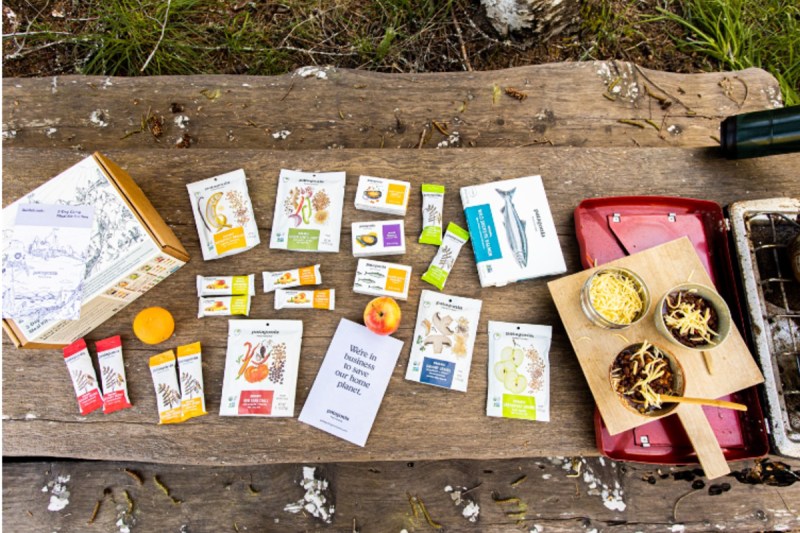
Are you assembling your own DIY emergency kit list? Record-breaking storms, hurricanes, floods, tornados, and weather-related power outages are in the news much too often. Headlines hardly represent the human suffering that results from the loss of power and safe drinking water. Food is essential for survival regardless of the natural disaster. Many households store an inventory of Meals Ready to Eat (MREs) to be prepared. We scoured the internet to find where to buy MRE Meals. Perhaps not surprisingly, we found familiar and trusted online merchants with plenty of MRE selections, listed below. We also included tips on how to buy MREs and factors to consider, further below.
Amazon
Augason Farms Lunch and Dinner Variety Pail Emergency Food Supply 4-Gallon Pail – 92 servings
— $60, was $85XMRE BLUE LINE Food Packs, 12 full meals
— $95Mountain House Classic Bucket, 24 Servings
— $110Wise Company Emergency Food Supply, 60 Servings
— $120Sopakco 24ct US Military Surplus MRE
— $198
Dick’s Sporting Goods
OMEALS 8 oz. Lentils with Beef, 1 serving
— $10Redcon1 MRE Lite Animal Based Protein Oatmeal Chocolate Chip, 30 Servings
— $40King Kooker Party-Size Jambalaya Mix
— $47Wise Company Prepper Bucket, 52 servings
— $70
REI
Mountain House Breakfast Skillet XL, 8 Servings
— $55Mountain House 3-Day Emergency Food Supply Kit, 18 Servings
— $74AlpineAire Foods Ready Meal Kit
— $85Patagonia Provisions 2-Day Camp Meal Kit For 2
— $89
Walmart
Redcon1 MRE BAR Chocolate Chip Cookie Dough, 12 Bars
— $30APack MREs, 12 meals
— $110Sure-Pak 12 MRE Kit – 12 Full Meals
— $140Augason Farms 1-Person 30-Day Emergency Food Supply
— $149, was $170
What Should I Know About Buying MREs?
Many people have their first experience with Meals Ready to Eat (MREs) in the military, where nutrition on the go in unpredictable circumstances can be a matter of survival. Few rave about the taste of MREs, although newer technologies have improved the taste and smell. MREs are functional fuel and therefore nutritional value, portability, long shelf-life, and simple preparation all matter more than tastiness. If you’ve decided to build your own emergency survival kit to have on hand in case of disastrous weather events or long-term power loss, consider the following factors.
- Nutritional Value: You may not be going on forced marches or even going anywhere, but food you buy to store against an emergency has to deliver sufficient calories and as close to a balanced diet as feasible. Salty snacks and too much sugar works against you nutritionally in an emergency — well, anytime, but we’re only considering emergency situations.
- Portability: You may assume that you’ll be camping out in your home, even if the power is out, but what if you have to leave in a hurry. Lightweight, prepacked MREs can make a big difference if you have a 2-minute warning and need to vacate fast. Even if you’re going to leave in a vehicle, an emergency food supply including MREs needs to be easy to transport.
- Shelf Life: MREs are typically, but not always, freeze-dried. Removing water from MREs during manufacture and processing minimizes weight and also lessens the chance of the food going bad. However, MREs don’t last forever. Like other foods sold in the U.S., MREs have expiration dates, typically in the case of MREs with shelf lives of two or more years. Don’t take a chance on eating an expired MRE or any other food because it could be bad for your health. When choosing MREs to store for emergencies, selecting MREs with long shelf lives can save money now and save your life later.
- Ease of Preparation: Some MREs are ready to eat right out of the bag (don’t buy MREs in individual meals or servings in cans). Many others may require mixing with water to rehydrate and it’s common that MREs mixed with water need to be cooked, or at least heated, before they’re actually ready to eat. A compact cooking device is a near necessity for most MREs (also for coffee). Air fryers and Instant Pots won’t do you any good during electrical power outages, but a compact, often folding, single-cup-sized cook stove can transform a dry MRE mixed with a little water into a delicious meal. Well, a meal you can actually eat.



